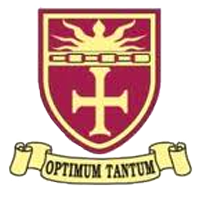As the only faith-based secondary school in the Vale of Glamorgan, St Richard Gwyn has a large catchment area, extending from Penarth in the east, through to Barry, Cowbridge and the rural Vale as far as Llantwit Major in the west. With 660 pupils on roll, the school is over-subscribed; recent successes have contributed to its reputation as a high performing institution. Much of this success can be attributed to the headline objective of the school, which is to provide a personal learning environment for each individual student.
The close relationship between students and staff is certainly conducive to the effective personalised learning offered. This support of every child’s individual needs and areas of interest is supported by the diverse curriculum offered, which includes the core compulsory subjects, the standard optional GCSE subjects but also vocational options from Military Preparation (BTEC Public Studies), to Electrical Engineering and even Hair and Beauty qualifications.
Recognising the potential for technology to support this personalised approach to learning, IT Technician principal, Mark Baldwin started having a discussion with his colleagues about the possibility of having a mobile device, namely a tablet PC, for each child in the school, moving towards the concept of a ‘bring your own’ model.
Rather than have the children sit at the front of the class watching the teacher lead a presentation , St Richard Gwyn wanted a more interactive approach to learning where the students are given the learning objective and can then work away independently and at their own pace.
Mark explains their first steps. “The initial consideration was whether tablets have a place in our school environment and I have to admit that as a big Apple fan, while I was reviewing this, my thoughts were based around the application of the iPad.
“Luckily I was invited to a focus group of schools in Wales where the guest speaker was Nik Tuson, from Avantis, producers of the education sector focused LearnPad tablet.
“I started to realise that while the iPad is undoubtedly a lovely piece of hardware, in terms of its relevance to supporting learning, it just doesn’t offer the right format; it is designed for individual consumer use and is just too restrictive for the wide range of classroom needs”.
Once Mark had been introduced to the LearnPad, the review process began. With the specific needs of the school, especially the requirement for each child to follow an individual learning pathway, in mind, the ICT team started to look at the LearnPad’s foot-print and relevance to these needs.
Mark and his team found that the LearnPad’s integrated customisable student interface and browser was the principle feature making it ideal for the school’s specific needs. The students could be put into their own environment where their learning is channelled into the learning objectives set.
The autonomous learning that the LearnPad facilitates is based on the teacher’s ability to quickly and easily plan each child’s lessons. Profiles based on subject, age and developmental level were easily set up and from then on, the teachers were able to create a lesson plan for each child quicker than they could previously. Each child can use their LearnPad to scan a QR codes matching each individual profile and they immediately obtain their learning objective and can access associated activity in front of them.
The ICT team decided to roll out the LearnPads one class at a time and felt that History was probably the best place to start. Mark explains why. “We knew that if we started the roll out in the ICT department, the teachers would have their own preconceived ideas. Having possibly the weakest link to technology, we felt that the history teachers were probably going to be more open to considering new ways of working”.
Mark and his team sat for a day with the History teaching staff to fully understand what they do, how they do it and what would make their lives easier and more effective. By the end of the day, it took them just fifteen minutes to create four weeks of lesson activities in a lesson profile.
“The outcome in the first History class was amazing!” says Mark. He continues, “In a subject which can be hard to engage children, they were all excited and interested, especially the boys who are probably the more reluctant historians”.
The teachers use LearnPad’s online management portal, LearnPad ClassConnect, to upload activities into categories of learning objectives, which is then held in a profile. Each child can be assigned a relevant profile, giving them a tailored learning pathway.
Mark summarises: “It is so flexible and easy, it is fantastic. I have always loved the learning platform Moodle but I feel that using the QrKeys with the LearnPad will give the school more control.
The possibilities are endless and in the future, I hope we will have a system where each child brings their own LearnPad to school, as with the content being cloud-based, their learning can be a continuum between home and school. I believe this is something that all schools should be looking at”.


